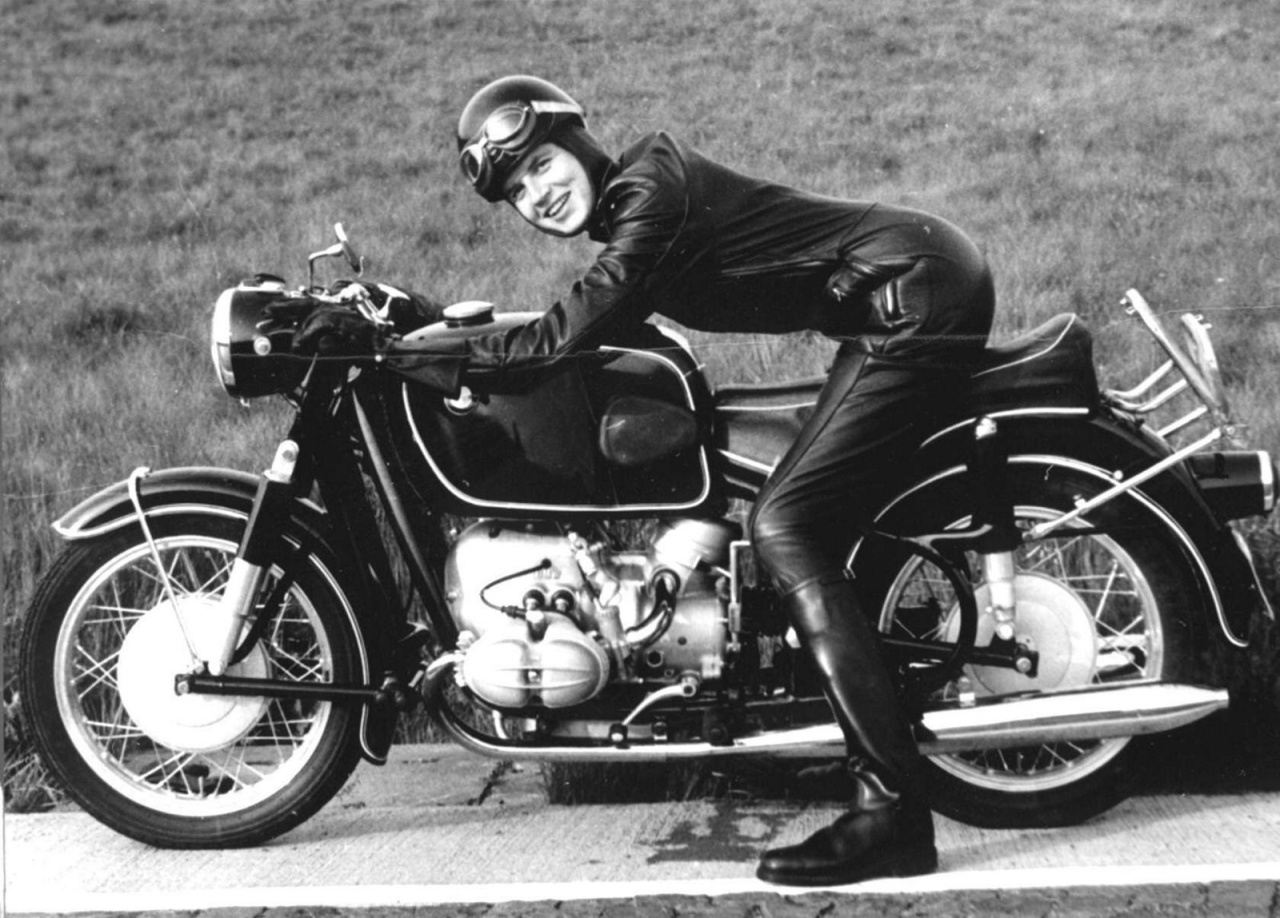A fashion icon, a racer, a journalist, and a writer, Anke-Eve Goldmann was a pioneer for female motorcyclists, both in Germany and in the United States. In most images, the over-6-foot, dark haired German beauty can be seen riding atop a BMW R69, at the time the fastest Bavarian flat-twin roadster, sporting a leather cat-suit. Although she was never officially sponsored by BMW she almost solely rode bikes produced by the company, displaying the flashy letters of BMW on her classic pudding basin helmet. Her riding gear was designed by herself, with the help of the German manufacturing company Harro, winning her the title of the first woman to wear a once-piece leather racing suit, and aiding female riding fashion in the process, as her designs were approved for public distribution.

Goldmann was often ridiculed and barred from racing due to her sex but that didn’t stop her from competing wherever she could. She participated in speed circuits and endurance races, with her modified for speed BMWs. Unfortunately, she was barred from competing at higher levels or in Grand Prix’s, possibly driving her to help found the Women’s International Motorcyclists Association in Europe in the late 1950’s.
Her passion for racing fueled her journalism career, with articles written for motorcycle magazines such as Cycle World, Moto Revue, and MotorRad. Most notably, Goldmann broke social taboos of the time by crossing into East Germany in 1962 while the Berlin wall was under construction, to document soviet women’s racing. Cold war tensions stopped articles written during this time from being published in European magazines, but they were accepted in American magazines, despite the growing tension of the Cold War Era. Rumor has it that due to her connections and mobility in East Germany, Anke-Eve was approached by the CIA to be a spy, but she refused and stopped traveling to the Soviet Union.

Goldmann’s fast paced and fashionable persona became the influence for André Pieyre de Mandiargues 1963 novel, The Motorcycle. The novel later was adapted into the 1968 cult classic The Girl on a Motorcycle.
Although Anke-Eve stopped riding following the death of a close friend from a riding accident and has stayed out of the public eye since, her legacy lives on through riding fashion, equality, and film.